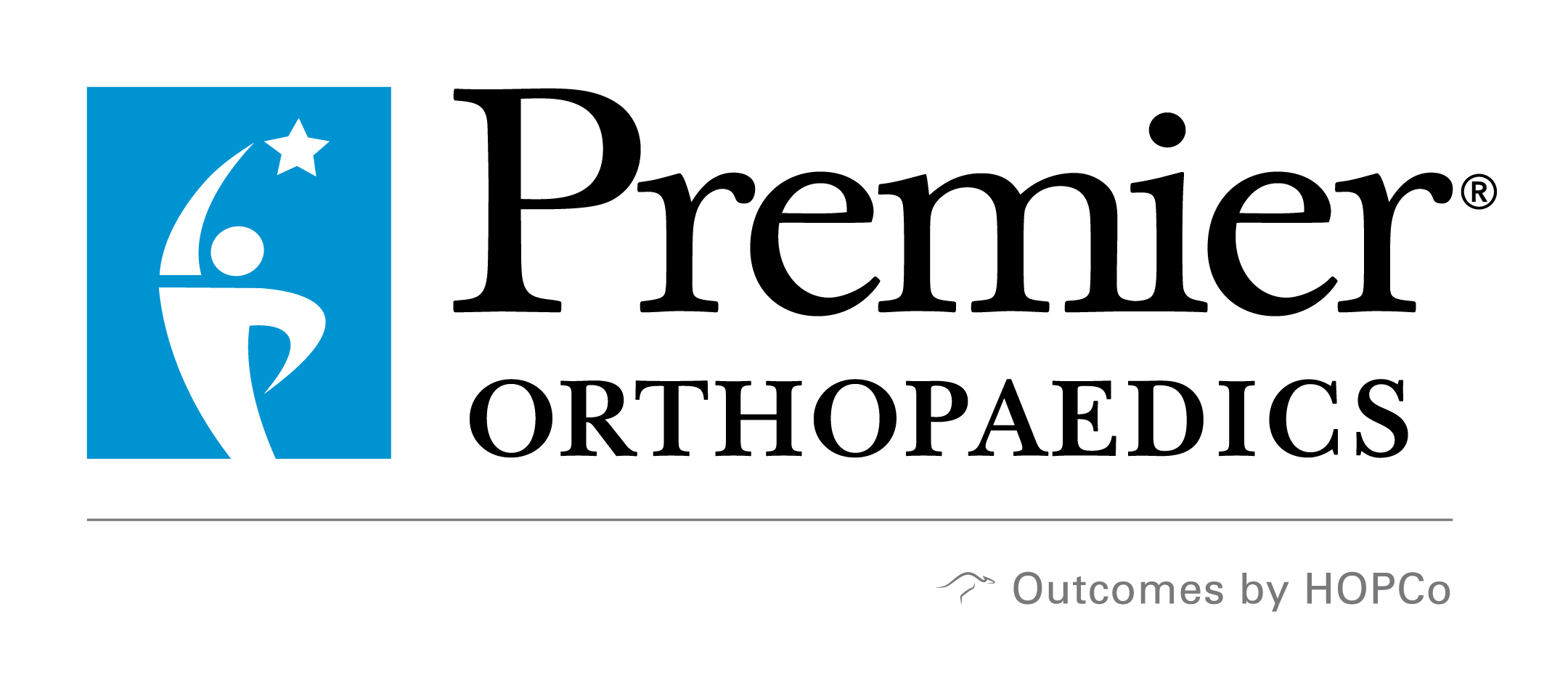Trusted Shoulder and Elbow Specialists in Greater Philadelphia

Shoulder injuries are a cause of discomfort and pain for many people. The reasons behind shoulder injuries vary but usually are a result of loss of elasticity in joints and flexibility in the elderly or trauma in younger people. Athletes suffer shoulder injuries as a...
Post-surgery rehabilitation is an important step in recovering from shoulder surgery. After undergoing surgery, there are some things one should keep in mind to make the period less stressful and more manageable. One of the things to remember is that you should not be...
In the competitive world of amateur and professional sports, winning or losing is literally determined in a matter of split seconds. Boxers thus push themselves harder so they can punch harder and faster; racquet game players train for speed and power too;...
While our shoulder and elbow joints are incredibly strong and flexible, capable of helping us lift, throw, carry, and perform an array of activities throughout our day, they are also surprisingly fragile. When something goes wrong, life at home, at work, and on the field becomes more complicated. So, if something with your elbow or shoulder is affecting your range of motion or causing pain, turn to the team at Premier Orthopaedics.
With a comprehensive network of specialists and advanced treatment solutions, we provide dedicated shoulder and elbow care in the Greater Philadelphia area and can get to the bottom of your discomfort, stiffness, or lack of mobility. Find a Premier Orthopaedics specialist near you and schedule an appointment today.
When to See a Shoulder and Elbow Care Specialist
Are you experiencing pain that interferes with your daily activities or limits your ability to move freely? Persistent discomfort is not something you should ignore, as it is a clear indicator that something more serious may be going on. Make sure you seek a professional evaluation from a qualified elbow and shoulder specialist if any of the following symptoms sound familiar:
- Pain when lifting or reaching overhead
- Limited range of motion in the shoulder or elbow
- Weakness in the arm or shoulder
- Swelling or stiffness that doesn’t improve
- Pain that radiates from the shoulder down to the hand
- Tingling or numbness in the arms or fingers
- Difficulty sleeping due to shoulder or elbow discomfort
- A noticeable lump or deformity around the joint
Getting ahead of the problem with an expert evaluation can make a major difference in your recovery and long-term mobility, so don’t wait to contact our team. If your elbow or shoulder pain is due to a recent trauma (such as a sporting incident or fall), visit our urgent orthopaedic care center today.
The Most Common Shoulder and Elbow Conditions and Concerns
Think of all the ways you use your arms throughout the day—from picking up your kids to swinging a golf club. This constant use makes your shoulders and elbows vulnerable to a variety of conditions. After all, the shoulder joint is just a ball and socket between the scapula and the humerus and is one of the most mobile joints in the body. And because the elbow joint is where the two bones of the forearm — the radius and the ulna — meet, it is especially susceptible to stress injuries. For these reasons, we frequently see patients who are experiencing pain, stiffness, or loss of function in their elbows and shoulders. Some of the most common shoulder and elbow concerns we address include:
Arthritis
Arthritis in the shoulder or elbow involves joint inflammation that leads to pain, stiffness, and reduced mobility. Osteoarthritis, the most common type, occurs due to cartilage degeneration over time. People with arthritis often find that weather changes affect their symptoms and that tasks like lifting, pushing, or gripping become more taxing.
Bursitis
Bursae are small, fluid-filled sacs that reduce friction between bones and soft tissue. Inflammation of these sacs, or bursitis, can lead to swelling, tenderness, and aching pain in the shoulder or elbow. The condition is commonly triggered by repetitive motion or prolonged pressure, making simple actions like leaning on an elbow or lifting even lightweight items painful.
Labral Tears
The labrum is a ring of cartilage that cushions and stabilizes the shoulder socket. When it tears — often due to repetitive overhead motions or acute trauma — it can cause a catching sensation, reduced strength, and limited range of motion. Athletes and individuals with physically demanding jobs are especially susceptible, and untreated labral tears can significantly impact performance and comfort.
Fractures and Joint Instability
Trauma can cause fractures in the bones of the shoulder or elbow, leading to severe pain, deformity, and an inability to move the joint. Joint instability may also result from ligament damage or recurring dislocations. Both conditions require expert trauma care to restore function and prevent future problems.
Dislocations
Shoulder and elbow dislocations occur when bones are forced out of their normal positions. These injuries are usually the result of trauma or a fall and cause intense pain, swelling, and joint instability. After a dislocation, the joint may become more prone to repeat episodes, which can interfere with sports or even daily routines.
Ligament Injuries
Ligaments are crucial for stabilizing joints, and injuries to these parts of the body can lead to instability, pain, and limited movement. In athletes and active individuals, ligament injuries often occur due to sudden twists or direct blows. These injuries require prompt evaluation to prevent long-term complications.
Frozen Shoulder
A frozen shoulder causes stiffness and pain in the shoulder joint due to inflammation and thickening of the joint capsule. It typically develops gradually and worsens over time, severely restricting motion. Patients often find it challenging to lift their arms or rotate them behind their backs.
Rotator Cuff Tears
The rotator cuff is a group of muscles and tendons that stabilize the shoulder and allow for fluid arm movement. A tear in this region can result from a sudden injury or gradual wear and tear. And since individuals with a torn rotator cuff may experience weakness when lifting or rotating the arm and pain that worsens at night, rotator cuff treatment is essential for recovery.
Tennis Elbow
Tennis elbow is a painful condition caused by overuse of the elbow and is characterized by the inflammation of the tendons on the outside of the elbow. People with this condition typically feel pain that extends into the forearm and wrist, making simple tasks like shaking hands or holding a coffee mug difficult.
Golfer’s Elbow
Similar to tennis elbow, golfer’s elbow involves inflammation of the tendons — but on the inside of the elbow. It typically results from repetitive wrist flexing or gripping and is common in athletes and manual laborers. Pain, stiffness, and weakness in the wrist and hand are common.
Shoulder Impingement Syndrome
This condition occurs when the tendons of the rotator cuff become compressed during shoulder movements. It often results in inflammation and pain when raising the arm. Over time, impingement can lead to more severe injuries like tendon tears.
Ulnar Nerve Entrapment
This condition involves compression of the ulnar nerve, often at the elbow. It can cause tingling, numbness, and weakness in the hand and fingers. Prolonged bending of the elbow, such as during phone use or sleep, can worsen symptoms. If left untreated, it can lead to a loss of hand function.
Read More
What to Expect During Your Visit
When you visit any one of our over 35 locations in the Greater Philadelphia area, you will sit with a highly qualified elbow and shoulder care specialist who will take the time to listen to your symptoms, assess your medical history, and perform a physical examination focused on identifying the root cause of your discomfort. Depending on your condition, advanced imaging tests like X-rays, MRI scans, or ultrasounds may be used to provide a clearer picture of what’s happening inside the joint.
Of course, we don’t stop at diagnostics. Our team walks you through your results and outlines every option available, ensuring you have a full understanding of your condition and the potential paths to recovery. We’ll then schedule follow-up treatment appointments (if needed) and assist you with rehabilitation.
Shoulder and Elbow Pain Treatment Options
Not every shoulder or elbow issue requires surgery. In fact, most patients benefit from conservative treatments designed to reduce pain, restore strength, and improve range of motion. These non-surgical options often include physical therapy, anti-inflammatory medications, corticosteroid injections, and activity modification. For those dealing with rotator cuff injuries, our targeted rotator cuff treatment programs are highly effective in helping you regain function and return to your favorite activities.
When surgery is necessary, our orthopaedic specialists are equipped to perform minimally invasive surgical techniques. These procedures minimize recovery time and scarring while maximizing results. Common surgical interventions may involve rotator cuff repair, labral repair, shoulder or elbow arthroscopy, total shoulder replacement, or ulnar nerve decompression. As your dedicated shoulder and elbow injury specialists, we work closely with you to determine the best approach, always prioritizing your individual needs and lifestyle goals.
Speak to Our Shoulder and Elbow Specialists for Effective Solutions
If you’re experiencing pain in your shoulder, arm, or upper back, don’t dismiss it as something that will go away on its own. These symptoms may be an early warning sign of a more complex condition, and delaying treatment can lead to further damage or reduced mobility. The silver lining is that Premier Orthopaedics can provide the individualized attention you deserve.
Our shoulder and elbow care specialists in the Greater Philadelphia area make it easy to access high-quality solutions that address the root of your discomfort. Whether you need specialized rotator cuff treatment, evaluation by experienced elbow injury specialists for possible bursitis, or a customized recovery plan for a fracture, we are here to guide you every step of the way.
Reclaim the freedom to move without pain. Contact Premier Orthopaedics today to schedule your appointment and take the first step toward healing.

PHYSICIANLOCATIONS[pac_dth_taxonomy_list post_type="physicians" show_dynamic_taxonomies="on" show_taxonomy_image="off" show_taxonomy_button="off" taxonomies_column="1" disabled_on="on|on|off" admin_label="Locations" module_class="phy-loc-side"...

PHYSICIAN LOCATIONS [pac_dth_taxonomy_list post_type="physicians" show_dynamic_taxonomies="on" show_taxonomy_image="off" show_taxonomy_button="off" taxonomies_column="1" disabled_on="on|on|off" admin_label="Locations" module_class="phy-loc-side"...

PHYSICIANLOCATIONS[pac_dth_taxonomy_list post_type="physicians" taxonomy_physicians="loc-name" show_dynamic_taxonomies="on" show_taxonomy_image="off" show_taxonomy_button="off" taxonomies_column="1" disabled_on="on|on|off" admin_label="Locations"...

PHYSICIANLOCATIONS[pac_dth_taxonomy_list post_type="physicians" taxonomy_physicians="loc-name" show_dynamic_taxonomies="on" show_taxonomy_image="off" show_taxonomy_button="off" taxonomies_column="1" disabled_on="on|on|off" admin_label="Locations"...

PHYSICIANLOCATIONS[pac_dth_taxonomy_list post_type="physicians" taxonomy_physicians="loc-name" show_dynamic_taxonomies="on" show_taxonomy_image="off" show_taxonomy_button="off" taxonomies_column="1" disabled_on="on|on|off" admin_label="Locations"...

PHYSICIANLOCATIONS[pac_dth_taxonomy_list post_type="physicians" taxonomy_physicians="loc-name" show_dynamic_taxonomies="on" show_taxonomy_image="off" show_taxonomy_button="off" taxonomies_column="1" disabled_on="on|on|off" admin_label="Locations"...
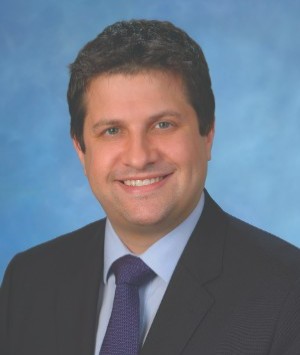
PHYSICIANLOCATIONS[pac_dth_taxonomy_list post_type="physicians" taxonomy_physicians="loc-name" show_dynamic_taxonomies="on" show_taxonomy_image="off" show_taxonomy_button="off" taxonomies_column="1" disabled_on="on|on|off" admin_label="Locations"...

PHYSICIANLOCATIONS[pac_dth_taxonomy_list post_type="physicians" taxonomy_physicians="loc-name" show_dynamic_taxonomies="on" show_taxonomy_image="off" show_taxonomy_button="off" taxonomies_column="1" disabled_on="on|on|off" admin_label="Locations"...

PHYSICIANLOCATIONS[pac_dth_taxonomy_list post_type="physicians" taxonomy_physicians="loc-name" show_dynamic_taxonomies="on" show_taxonomy_image="off" show_taxonomy_button="off" taxonomies_column="1" disabled_on="on|on|off" admin_label="Locations"...
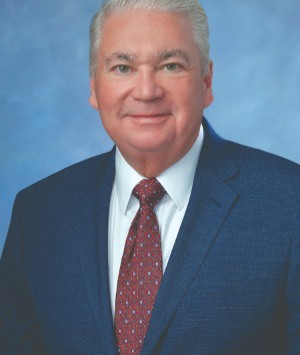
PHYSICIAN LOCATIONS [pac_dth_taxonomy_list post_type="physicians" taxonomy_physicians="loc-name" show_dynamic_taxonomies="on" show_taxonomy_image="off" show_taxonomy_button="off" taxonomies_column="1" disabled_on="on|on|off" admin_label="Locations"...

PHYSICIANLOCATIONS[pac_dth_taxonomy_list post_type="physicians" taxonomy_physicians="loc-name" show_dynamic_taxonomies="on" show_taxonomy_image="off" show_taxonomy_button="off" taxonomies_column="1" disabled_on="on|on|off" admin_label="Locations"...

PHYSICIAN LOCATIONS [pac_dth_taxonomy_list post_type="physicians" show_dynamic_taxonomies="on" show_taxonomy_image="off" show_taxonomy_button="off" taxonomies_column="1" disabled_on="on|on|off" admin_label="Locations" module_class="phy-loc-side"...
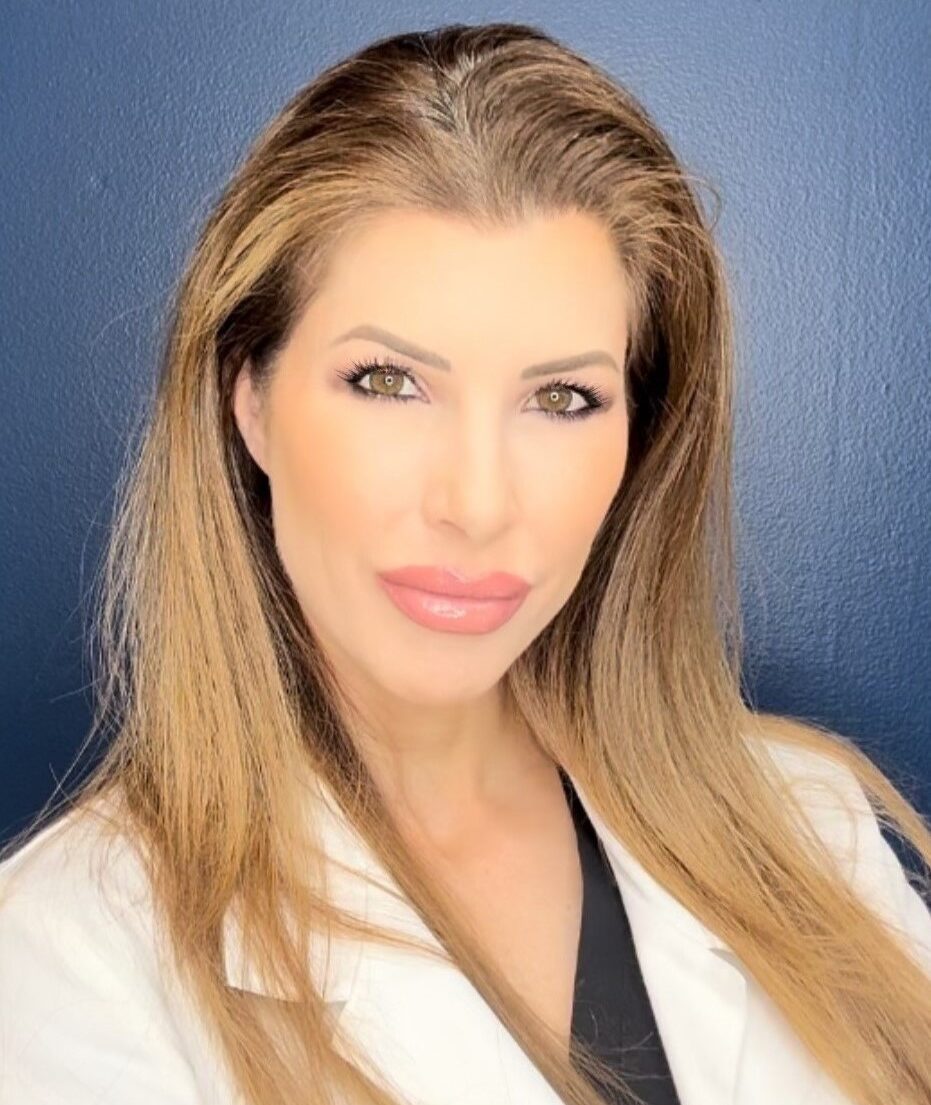
PHYSICIANLOCATIONS[pac_dth_taxonomy_list post_type="physicians" show_dynamic_taxonomies="on" show_taxonomy_image="off" show_taxonomy_button="off" taxonomies_column="1" disabled_on="on|on|off" admin_label="Locations" module_class="phy-loc-side"...

PHYSICIANLOCATIONS[pac_dth_taxonomy_list post_type="physicians" taxonomy_physicians="loc-name" show_dynamic_taxonomies="on" show_taxonomy_image="off" show_taxonomy_button="off" taxonomies_column="1" disabled_on="on|on|off" admin_label="Locations"...
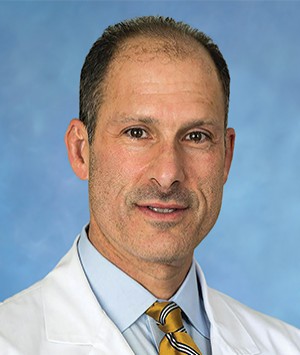
PHYSICIANLOCATIONS[pac_dth_taxonomy_list post_type="physicians" taxonomy_physicians="loc-name" show_dynamic_taxonomies="on" show_taxonomy_image="off" show_taxonomy_button="off" taxonomies_column="1" disabled_on="on|on|off" admin_label="Locations"...

PHYSICIANLOCATIONS[pac_dth_taxonomy_list post_type="physicians" taxonomy_physicians="loc-name" show_dynamic_taxonomies="on" show_taxonomy_image="off" show_taxonomy_button="off" taxonomies_column="1" disabled_on="on|on|off" admin_label="Locations"...

PHYSICIANLOCATIONS[pac_dth_taxonomy_list post_type="physicians" show_dynamic_taxonomies="on" show_taxonomy_image="off" show_taxonomy_button="off" taxonomies_column="1" disabled_on="on|on|off" admin_label="Locations" module_class="phy-loc-side"...

PHYSICIANLOCATIONS[pac_dth_taxonomy_list post_type="physicians" show_dynamic_taxonomies="on" show_taxonomy_image="off" show_taxonomy_button="off" taxonomies_column="1" disabled_on="on|on|off" admin_label="Locations" module_class="phy-loc-side"...

PHYSICIANLOCATIONS[pac_dth_taxonomy_list post_type="physicians" show_dynamic_taxonomies="on" show_taxonomy_image="off" show_taxonomy_button="off" taxonomies_column="1" disabled_on="on|on|off" admin_label="Locations" module_class="phy-loc-side"...

PHYSICIANLOCATIONS[pac_dth_taxonomy_list post_type="physicians" show_dynamic_taxonomies="on" show_taxonomy_image="off" show_taxonomy_button="off" taxonomies_column="1" disabled_on="on|on|off" admin_label="Locations" module_class="phy-loc-side"...

PHYSICIANLOCATIONS[pac_dth_taxonomy_list post_type="physicians" taxonomy_physicians="loc-name" show_dynamic_taxonomies="on" show_taxonomy_image="off" show_taxonomy_button="off" taxonomies_column="1" disabled_on="on|on|off" admin_label="Locations"...

PHYSICIANLOCATIONS[pac_dth_taxonomy_list post_type="physicians" show_dynamic_taxonomies="on" show_taxonomy_image="off" show_taxonomy_button="off" taxonomies_column="1" disabled_on="on|on|off" admin_label="Locations" module_class="phy-loc-side"...

PHYSICIANLOCATIONS[pac_dth_taxonomy_list post_type="physicians" show_dynamic_taxonomies="on" show_taxonomy_image="off" show_taxonomy_button="off" taxonomies_column="1" disabled_on="on|on|off" admin_label="Locations" module_class="phy-loc-side"...

PHYSICIANLOCATIONS[pac_dth_taxonomy_list post_type="physicians" show_dynamic_taxonomies="on" show_taxonomy_image="off" show_taxonomy_button="off" taxonomies_column="1" disabled_on="on|on|off" admin_label="Locations" module_class="phy-loc-side"...

PHYSICIANLOCATIONS[pac_dth_taxonomy_list post_type="physicians" show_dynamic_taxonomies="on" show_taxonomy_image="off" show_taxonomy_button="off" taxonomies_column="1" disabled_on="on|on|off" admin_label="Locations" module_class="phy-loc-side"...

PHYSICIANLOCATIONS[pac_dth_taxonomy_list post_type="physicians" taxonomy_physicians="loc-name" show_dynamic_taxonomies="on" show_taxonomy_image="off" show_taxonomy_button="off" taxonomies_column="1" disabled_on="on|on|off" admin_label="Locations"...

PHYSICIANLOCATIONS[pac_dth_taxonomy_list post_type="physicians" show_dynamic_taxonomies="on" show_taxonomy_image="off" show_taxonomy_button="off" taxonomies_column="1" disabled_on="on|on|off" admin_label="Locations" module_class="phy-loc-side"...

PHYSICIANLOCATIONS[pac_dth_taxonomy_list post_type="physicians" taxonomy_physicians="loc-name" show_dynamic_taxonomies="on" show_taxonomy_image="off" show_taxonomy_button="off" taxonomies_column="1" disabled_on="on|on|off" admin_label="Locations"...

PHYSICIANLOCATIONS[pac_dth_taxonomy_list post_type="physicians" show_dynamic_taxonomies="on" show_taxonomy_image="off" show_taxonomy_button="off" taxonomies_column="1" disabled_on="on|on|off" admin_label="Locations" module_class="phy-loc-side"...
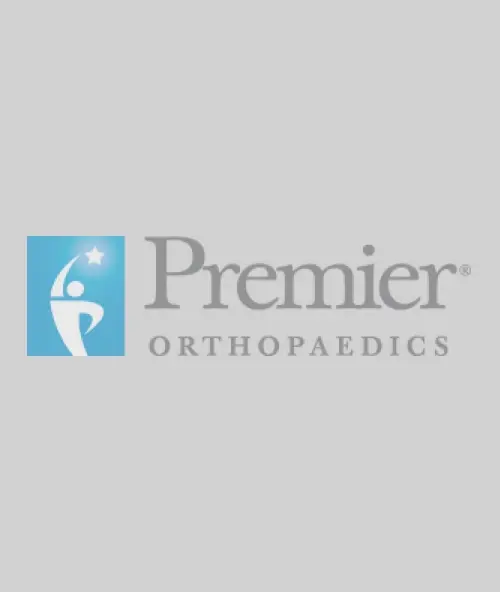
PHYSICIANLOCATIONS[pac_dth_taxonomy_list post_type="physicians" show_dynamic_taxonomies="on" show_taxonomy_image="off" show_taxonomy_button="off" taxonomies_column="1" disabled_on="on|on|off" admin_label="Locations" module_class="phy-loc-side"...

PHYSICIANLOCATIONS[pac_dth_taxonomy_list post_type="physicians" show_dynamic_taxonomies="on" show_taxonomy_image="off" show_taxonomy_button="off" taxonomies_column="1" disabled_on="on|on|off" admin_label="Locations" module_class="phy-loc-side"...
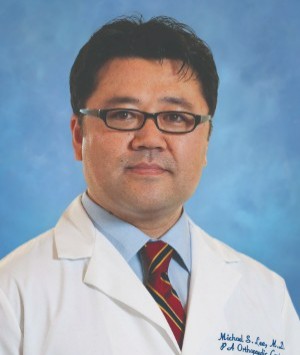
PHYSICIANLOCATIONS[pac_dth_taxonomy_list post_type="physicians" show_dynamic_taxonomies="on" show_taxonomy_image="off" show_taxonomy_button="off" taxonomies_column="1" disabled_on="on|on|off" admin_label="Locations" module_class="phy-loc-side"...
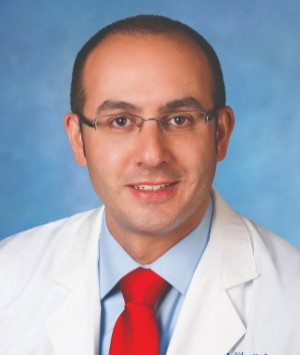
PHYSICIANLOCATIONS[pac_dth_taxonomy_list post_type="physicians" show_dynamic_taxonomies="on" show_taxonomy_image="off" show_taxonomy_button="off" taxonomies_column="1" disabled_on="on|on|off" admin_label="Locations" module_class="phy-loc-side"...

PHYSICIANLOCATIONS[pac_dth_taxonomy_list post_type="physicians" show_dynamic_taxonomies="on" show_taxonomy_image="off" show_taxonomy_button="off" taxonomies_column="1" disabled_on="on|on|off" admin_label="Locations" module_class="phy-loc-side"...
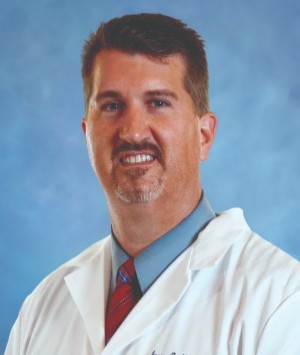
PHYSICIANLOCATIONS[pac_dth_taxonomy_list post_type="physicians" show_dynamic_taxonomies="on" show_taxonomy_image="off" show_taxonomy_button="off" taxonomies_column="1" disabled_on="on|on|off" admin_label="Locations" module_class="phy-loc-side"...
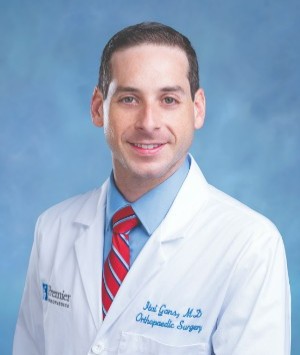
PHYSICIANLOCATIONS[pac_dth_taxonomy_list post_type="physicians" show_dynamic_taxonomies="on" show_taxonomy_image="off" show_taxonomy_button="off" taxonomies_column="1" disabled_on="on|on|off" admin_label="Locations" module_class="phy-loc-side"...
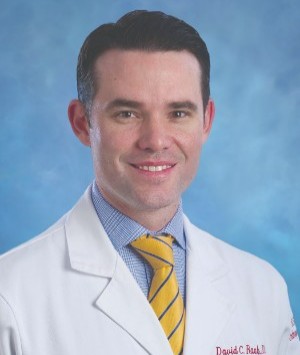
PHYSICIANLOCATIONS[pac_dth_taxonomy_list post_type="physicians" show_dynamic_taxonomies="on" show_taxonomy_image="off" show_taxonomy_button="off" taxonomies_column="1" disabled_on="on|on|off" admin_label="Locations" module_class="phy-loc-side"...

PHYSICIANLOCATIONS[pac_dth_taxonomy_list post_type="physicians" show_dynamic_taxonomies="on" show_taxonomy_image="off" show_taxonomy_button="off" taxonomies_column="1" disabled_on="on|on|off" admin_label="Locations" module_class="phy-loc-side"...

PHYSICIANLOCATIONS[pac_dth_taxonomy_list post_type="physicians" show_dynamic_taxonomies="on" show_taxonomy_image="off" show_taxonomy_button="off" taxonomies_column="1" disabled_on="on|on|off" admin_label="Locations" module_class="phy-loc-side"...

PHYSICIANLOCATIONS[pac_dth_taxonomy_list post_type="physicians" show_dynamic_taxonomies="on" show_taxonomy_image="off" show_taxonomy_button="off" taxonomies_column="1" disabled_on="on|on|off" admin_label="Locations" module_class="phy-loc-side"...

PHYSICIANLOCATIONS[pac_dth_taxonomy_list post_type="physicians" show_dynamic_taxonomies="on" show_taxonomy_image="off" show_taxonomy_button="off" taxonomies_column="1" disabled_on="on|on|off" admin_label="Locations" module_class="phy-loc-side"...

PHYSICAL THERAPISTLOCATIONS[pac_dth_taxonomy_list post_type="physicians" taxonomy_physicians="loc-name" show_dynamic_taxonomies="on" show_taxonomy_image="off" show_taxonomy_button="off" taxonomies_column="1" disabled_on="on|on|off" admin_label="Locations"...

PHYSICIANLOCATIONS[pac_dth_taxonomy_list post_type="physicians" taxonomy_physicians="loc-name" show_dynamic_taxonomies="on" show_taxonomy_image="off" show_taxonomy_button="off" taxonomies_column="1" disabled_on="on|on|off" admin_label="Locations"...

PHYSICIANLOCATIONS[pac_dth_taxonomy_list post_type="physicians" show_dynamic_taxonomies="on" show_taxonomy_image="off" show_taxonomy_button="off" taxonomies_column="1" disabled_on="on|on|off" admin_label="Locations" module_class="phy-loc-side"...
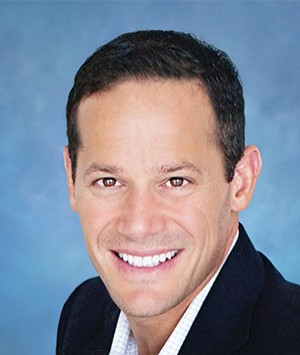
PHYSICIAN LOCATIONS [pac_dth_taxonomy_list post_type="physicians" show_dynamic_taxonomies="on" show_taxonomy_image="off" show_taxonomy_button="off" taxonomies_column="1" disabled_on="on|on|off" admin_label="Locations" module_class="phy-loc-side"...

PHYSICIANLOCATIONS[pac_dth_taxonomy_list post_type="physicians" taxonomy_physicians="loc-name" show_dynamic_taxonomies="on" show_taxonomy_image="off" show_taxonomy_button="off" taxonomies_column="1" disabled_on="on|on|off" admin_label="Locations"...

PHYSICIANLOCATIONS[pac_dth_taxonomy_list post_type="physicians" show_dynamic_taxonomies="on" show_taxonomy_image="off" show_taxonomy_button="off" taxonomies_column="1" disabled_on="on|on|off" admin_label="Locations" module_class="phy-loc-side"...

PHYSICIANLOCATIONS[pac_dth_taxonomy_list post_type="physicians" taxonomy_physicians="loc-name" show_dynamic_taxonomies="on" show_taxonomy_image="off" show_taxonomy_button="off" taxonomies_column="1" disabled_on="on|on|off" admin_label="Locations"...

PHYSICIANLOCATIONS[pac_dth_taxonomy_list post_type="physicians" taxonomy_physicians="loc-name" show_dynamic_taxonomies="on" show_taxonomy_image="off" show_taxonomy_button="off" taxonomies_column="1" disabled_on="on|on|off" admin_label="Locations"...

PHYSICIANLOCATIONS[pac_dth_taxonomy_list post_type="physicians" taxonomy_physicians="loc-name" show_dynamic_taxonomies="on" show_taxonomy_image="off" show_taxonomy_button="off" taxonomies_column="1" disabled_on="on|on|off" admin_label="Locations"...

PHYSICIANLOCATIONS[pac_dth_taxonomy_list post_type="physicians" show_dynamic_taxonomies="on" show_taxonomy_image="off" show_taxonomy_button="off" taxonomies_column="1" disabled_on="on|on|off" admin_label="Locations" module_class="phy-loc-side"...

PHYSICIANLOCATIONS[pac_dth_taxonomy_list post_type="physicians" taxonomy_physicians="loc-name" show_dynamic_taxonomies="on" show_taxonomy_image="off" show_taxonomy_button="off" taxonomies_column="1" disabled_on="on|on|off" admin_label="Locations"...

PHYSICIANLOCATIONS[pac_dth_taxonomy_list post_type="physicians" show_dynamic_taxonomies="on" show_taxonomy_image="off" show_taxonomy_button="off" taxonomies_column="1" disabled_on="on|on|off" admin_label="Locations" module_class="phy-loc-side"...

PHYSICIANLOCATIONS[pac_dth_taxonomy_list post_type="physicians" taxonomy_physicians="loc-name" show_dynamic_taxonomies="on" show_taxonomy_image="off" show_taxonomy_button="off" taxonomies_column="1" disabled_on="on|on|off" admin_label="Locations"...

PHYSICIANLOCATIONS[pac_dth_taxonomy_list post_type="physicians" taxonomy_physicians="loc-name" show_dynamic_taxonomies="on" show_taxonomy_image="off" show_taxonomy_button="off" taxonomies_column="1" disabled_on="on|on|off" admin_label="Locations"...

PHYSICIANLOCATIONS[pac_dth_taxonomy_list post_type="physicians" show_dynamic_taxonomies="on" show_taxonomy_image="off" show_taxonomy_button="off" taxonomies_column="1" disabled_on="on|on|off" admin_label="Locations" module_class="phy-loc-side"...
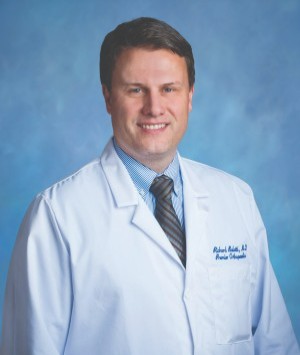
PHYSICIANLOCATIONS[pac_dth_taxonomy_list post_type="physicians" show_dynamic_taxonomies="on" show_taxonomy_image="off" show_taxonomy_button="off" taxonomies_column="1" disabled_on="on|on|off" admin_label="Locations" module_class="phy-loc-side"...

PHYSICIANLOCATIONS[pac_dth_taxonomy_list post_type="physicians" show_dynamic_taxonomies="on" show_taxonomy_image="off" show_taxonomy_button="off" taxonomies_column="1" disabled_on="on|on|off" admin_label="Locations" module_class="phy-loc-side"...

PHYSICIANLOCATIONS[pac_dth_taxonomy_list post_type="physicians" show_dynamic_taxonomies="on" show_taxonomy_image="off" show_taxonomy_button="off" taxonomies_column="1" disabled_on="on|on|off" admin_label="Locations" module_class="phy-loc-side"...

PHYSICIANLOCATIONS[pac_dth_taxonomy_list post_type="physicians" show_dynamic_taxonomies="on" show_taxonomy_image="off" show_taxonomy_button="off" taxonomies_column="1" disabled_on="on|on|off" admin_label="Locations" module_class="phy-loc-side"...

PHYSICIANLOCATIONS[pac_dth_taxonomy_list post_type="physicians" show_dynamic_taxonomies="on" show_taxonomy_image="off" show_taxonomy_button="off" taxonomies_column="1" disabled_on="on|on|off" admin_label="Locations" module_class="phy-loc-side"...

PHYSICIANLOCATIONS[pac_dth_taxonomy_list post_type="physicians" show_dynamic_taxonomies="on" show_taxonomy_image="off" show_taxonomy_button="off" taxonomies_column="1" disabled_on="on|on|off" admin_label="Locations" module_class="phy-loc-side"...

PHYSICIANLOCATIONS[pac_dth_taxonomy_list post_type="physicians" show_dynamic_taxonomies="on" show_taxonomy_image="off" show_taxonomy_button="off" taxonomies_column="1" disabled_on="on|on|off" admin_label="Locations" module_class="phy-loc-side"...

PHYSICIANLOCATIONS[pac_dth_taxonomy_list post_type="physicians" show_dynamic_taxonomies="on" show_taxonomy_image="off" show_taxonomy_button="off" taxonomies_column="1" disabled_on="on|on|off" admin_label="Locations" module_class="phy-loc-side"...

PHYSICIANLOCATIONS[pac_dth_taxonomy_list post_type="physicians" show_dynamic_taxonomies="on" show_taxonomy_image="off" show_taxonomy_button="off" taxonomies_column="1" disabled_on="on|on|off" admin_label="Locations" module_class="phy-loc-side"...
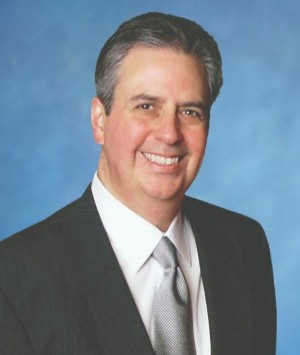
PHYSICIANLOCATIONS[pac_dth_taxonomy_list post_type="physicians" show_dynamic_taxonomies="on" show_taxonomy_image="off" show_taxonomy_button="off" taxonomies_column="1" disabled_on="on|on|off" admin_label="Locations" module_class="phy-loc-side"...

PHYSICIANLOCATIONS[pac_dth_taxonomy_list post_type="physicians" show_dynamic_taxonomies="on" show_taxonomy_image="off" show_taxonomy_button="off" taxonomies_column="1" disabled_on="on|on|off" admin_label="Locations" module_class="phy-loc-side"...

PHYSICIANLOCATIONS[pac_dth_taxonomy_list post_type="physicians" show_dynamic_taxonomies="on" show_taxonomy_image="off" show_taxonomy_button="off" taxonomies_column="1" disabled_on="on|on|off" admin_label="Locations" module_class="phy-loc-side"...

PHYSICIANLOCATIONS[pac_dth_taxonomy_list post_type="physicians" taxonomy_physicians="loc-name" show_dynamic_taxonomies="on" show_taxonomy_image="off" show_taxonomy_button="off" taxonomies_column="1" disabled_on="on|on|off" admin_label="Locations"...

PHYSICIANLOCATIONS[pac_dth_taxonomy_list post_type="physicians" taxonomy_physicians="loc-name" show_dynamic_taxonomies="on" show_taxonomy_image="off" show_taxonomy_button="off" taxonomies_column="1" disabled_on="on|on|off" admin_label="Locations"...

PHYSICIANLOCATIONS[pac_dth_taxonomy_list post_type="physicians" taxonomy_physicians="loc-name" show_dynamic_taxonomies="on" show_taxonomy_image="off" show_taxonomy_button="off" taxonomies_column="1" disabled_on="on|on|off" admin_label="Locations"...

PHYSICIANLOCATIONS[pac_dth_taxonomy_list post_type="physicians" show_dynamic_taxonomies="on" show_taxonomy_image="off" show_taxonomy_button="off" taxonomies_column="1" disabled_on="on|on|off" admin_label="Locations" module_class="phy-loc-side"...

PHYSICIANLOCATIONS[pac_dth_taxonomy_list post_type="physicians" show_dynamic_taxonomies="on" show_taxonomy_image="off" show_taxonomy_button="off" taxonomies_column="1" disabled_on="on|on|off" admin_label="Locations" module_class="phy-loc-side"...

PHYSICIANLOCATIONS[pac_dth_taxonomy_list post_type="physicians" taxonomy_physicians="loc-name" show_dynamic_taxonomies="on" show_taxonomy_image="off" show_taxonomy_button="off" taxonomies_column="1" disabled_on="on|on|off" admin_label="Locations"...

PHYSICIANLOCATIONS[pac_dth_taxonomy_list post_type="physicians" taxonomy_physicians="loc-name" show_dynamic_taxonomies="on" show_taxonomy_image="off" show_taxonomy_button="off" taxonomies_column="1" disabled_on="on|on|off" admin_label="Locations"...

PHYSICIANLOCATIONS[pac_dth_taxonomy_list post_type="physicians" show_dynamic_taxonomies="on" show_taxonomy_image="off" show_taxonomy_button="off" taxonomies_column="1" disabled_on="on|on|off" admin_label="Locations" module_class="phy-loc-side"...

PHYSICIANLOCATIONS[pac_dth_taxonomy_list post_type="physicians" taxonomy_physicians="loc-name" show_dynamic_taxonomies="on" show_taxonomy_image="off" show_taxonomy_button="off" taxonomies_column="1" disabled_on="on|on|off" admin_label="Locations"...

PHYSICIANLOCATIONS[pac_dth_taxonomy_list post_type="physicians" show_dynamic_taxonomies="on" show_taxonomy_image="off" show_taxonomy_button="off" taxonomies_column="1" disabled_on="on|on|off" admin_label="Locations" module_class="phy-loc-side"...

PHYSICIANLOCATIONS[pac_dth_taxonomy_list post_type="physicians" show_dynamic_taxonomies="on" show_taxonomy_image="off" show_taxonomy_button="off" taxonomies_column="1" disabled_on="on|on|off" admin_label="Locations" module_class="phy-loc-side"...

PHYSICIANLOCATIONS[pac_dth_taxonomy_list post_type="physicians" taxonomy_physicians="loc-name" show_dynamic_taxonomies="on" show_taxonomy_image="off" show_taxonomy_button="off" taxonomies_column="1" disabled_on="on|on|off" admin_label="Locations"...

PHYSICIANLOCATIONS[pac_dth_taxonomy_list post_type="physicians" show_dynamic_taxonomies="on" show_taxonomy_image="off" show_taxonomy_button="off" taxonomies_column="1" disabled_on="on|on|off" admin_label="Locations" module_class="phy-loc-side"...

PHYSICIANLOCATIONS[pac_dth_taxonomy_list post_type="physicians" show_dynamic_taxonomies="on" show_taxonomy_image="off" show_taxonomy_button="off" taxonomies_column="1" disabled_on="on|on|off" admin_label="Locations" module_class="phy-loc-side"...

PHYSICIANLOCATIONS[pac_dth_taxonomy_list post_type="physicians" show_dynamic_taxonomies="on" show_taxonomy_image="off" show_taxonomy_button="off" taxonomies_column="1" disabled_on="on|on|off" admin_label="Locations" module_class="phy-loc-side"...

PHYSICIANLOCATIONS[pac_dth_taxonomy_list post_type="physicians" show_dynamic_taxonomies="on" show_taxonomy_image="off" show_taxonomy_button="off" taxonomies_column="1" disabled_on="on|on|off" admin_label="Locations" module_class="phy-loc-side"...

PHYSICIANLOCATIONS[pac_dth_taxonomy_list post_type="physicians" show_dynamic_taxonomies="on" show_taxonomy_image="off" show_taxonomy_button="off" taxonomies_column="1" disabled_on="on|on|off" admin_label="Locations" module_class="phy-loc-side"...

PHYSICIANLOCATIONS[pac_dth_taxonomy_list post_type="physicians" taxonomy_physicians="loc-name" show_dynamic_taxonomies="on" show_taxonomy_image="off" show_taxonomy_button="off" taxonomies_column="1" disabled_on="on|on|off" admin_label="Locations"...

PHYSICIANLOCATIONS[pac_dth_taxonomy_list post_type="physicians" show_dynamic_taxonomies="on" show_taxonomy_image="off" show_taxonomy_button="off" taxonomies_column="1" disabled_on="on|on|off" admin_label="Locations" module_class="phy-loc-side"...

PHYSICIANLOCATIONS[pac_dth_taxonomy_list post_type="physicians" show_dynamic_taxonomies="on" show_taxonomy_image="off" show_taxonomy_button="off" taxonomies_column="1" disabled_on="on|on|off" admin_label="Locations" module_class="phy-loc-side"...

PHYSICIANLOCATIONS[pac_dth_taxonomy_list post_type="physicians" taxonomy_physicians="loc-name" show_dynamic_taxonomies="on" show_taxonomy_image="off" show_taxonomy_button="off" taxonomies_column="1" disabled_on="on|on|off" admin_label="Locations"...

PHYSICIANLOCATIONS[pac_dth_taxonomy_list post_type="physicians" show_dynamic_taxonomies="on" show_taxonomy_image="off" show_taxonomy_button="off" taxonomies_column="1" disabled_on="on|on|off" admin_label="Locations" module_class="phy-loc-side"...

PHYSICIAN LOCATIONS [pac_dth_taxonomy_list post_type="physicians" show_dynamic_taxonomies="on" show_taxonomy_image="off" show_taxonomy_button="off" taxonomies_column="1" disabled_on="on|on|off" admin_label="Locations" module_class="phy-loc-side"...

PHYSICIANLOCATIONS[pac_dth_taxonomy_list post_type="physicians" taxonomy_physicians="loc-name" show_dynamic_taxonomies="on" show_taxonomy_image="off" show_taxonomy_button="off" taxonomies_column="1" disabled_on="on|on|off" admin_label="Locations"...
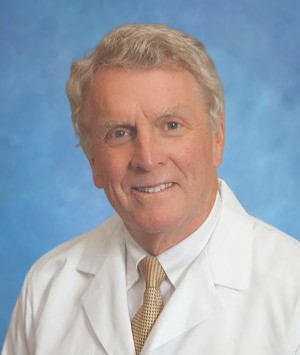
PHYSICIANLOCATIONS[pac_dth_taxonomy_list post_type="physicians" show_dynamic_taxonomies="on" show_taxonomy_image="off" show_taxonomy_button="off" taxonomies_column="1" disabled_on="on|on|off" admin_label="Locations" module_class="phy-loc-side"...

PHYSICIANLOCATIONS[pac_dth_taxonomy_list post_type="physicians" show_dynamic_taxonomies="on" show_taxonomy_image="off" show_taxonomy_button="off" taxonomies_column="1" disabled_on="on|on|off" admin_label="Locations" module_class="phy-loc-side"...

PHYSICIANLOCATIONS[pac_dth_taxonomy_list post_type="physicians" taxonomy_physicians="loc-name" show_dynamic_taxonomies="on" show_taxonomy_image="off" show_taxonomy_button="off" taxonomies_column="1" disabled_on="on|on|off" admin_label="Locations"...

PHYSICIANLOCATIONS[pac_dth_taxonomy_list post_type="physicians" taxonomy_physicians="loc-name" show_dynamic_taxonomies="on" show_taxonomy_image="off" show_taxonomy_button="off" taxonomies_column="1" disabled_on="on|on|off" admin_label="Locations"...
